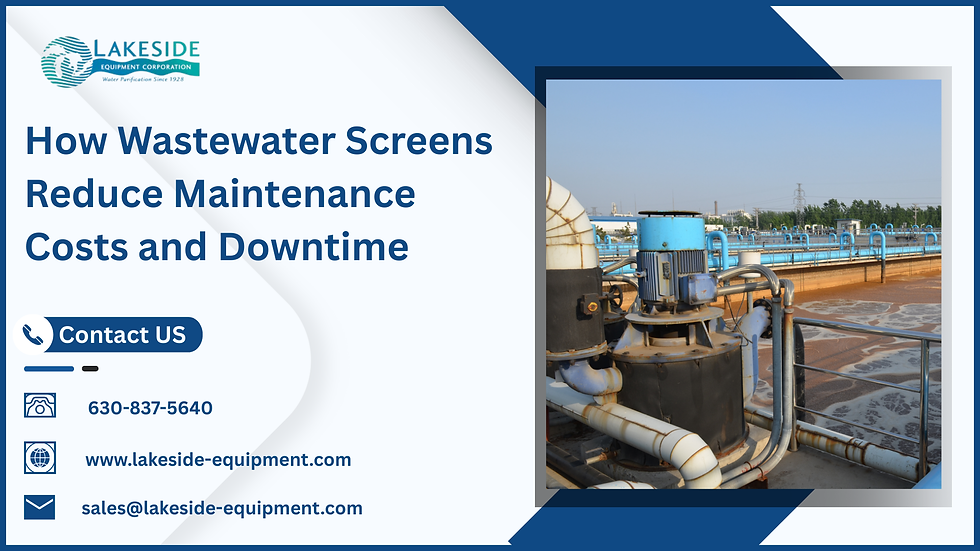Upkeep Your Waterways And Safeguard Environment Through Wastewater Treatment Plants
- lakesideequipment

- Mar 20, 2024
- 2 min read
The water we use every day for showers, laundry, and flushing doesn't just disappear down the drain. This "wastewater" undergoes a multi-stage process to be cleaned and returned to the environment or even reused. Let's delve into the unseen heroes – wastewater treatment plants – and explore how they work efficiently.
Why is water treatment important
Wastewater treatment is not just about keeping our waterways clean; it's essential for environmental and public health. Untreated wastewater can contaminate rivers, lakes, and oceans, harming aquatic life and posing health risks. By removing pollutants and pathogens, wastewater treatment plants safeguard our precious water resources and ensure a healthy environment.
How does a wastewater treatment plant work
In recent years, there's been a growing focus on water reuse. Treated wastewater can be a valuable resource for irrigation, industrial processes, or even toilet flushing, reducing our reliance on freshwater sources. Wastewater treatment plants are thus evolving into water resource recovery facilities, playing a vital role in sustainable water management.

A typical wastewater treatment plant functions through a series of stages, each tackling different types of contaminants. These stages can be broadly categorized as:
Preliminary Treatment: Here, large objects like rags and debris are removed using screens and grit removal units. Think of it as catching the big fish before they clog the system.
Primary Treatment: This stage focuses on removing settle able solids and organic matter through settling tanks. Imagine letting heavy particles sink to the bottom, like sediment in a glass of dirty water.
Secondary Treatment: This is the biological workhorse. Microorganisms like bacteria and protozoa consume the dissolved organic matter in the wastewater. It's like having a microscopic cleaning crew break down the waste!
Tertiary Treatment (Optional): For stricter environmental requirements or water reuse purposes, additional treatment may be needed. This can involve removing nutrients like nitrogen and phosphorus, or polishing the effluent further.
Disinfection: The final stage ensures the elimination of harmful pathogens like bacteria and viruses using methods like chlorination or ultraviolet light. Safety first! This treated wastewater, called effluent, can then be discharged into rivers or reused for irrigation.
One interesting tool used in wastewater treatment plants is the Archimedes screw pump. This ingenious invention, named after the ancient Greek mathematician Archimedes, uses a helical screw to efficiently move wastewater uphill. Imagine a giant corkscrew continuously scooping and lifting the water. These pumps are known for their reliability, low energy consumption, and ability to handle solids without clogging, making them well-suited for this challenging task. Contact a trusted provider of wastewater treatment plants now.




Comments